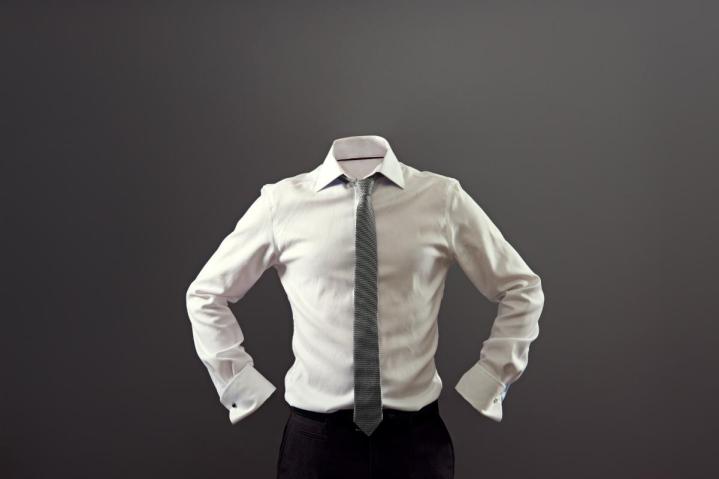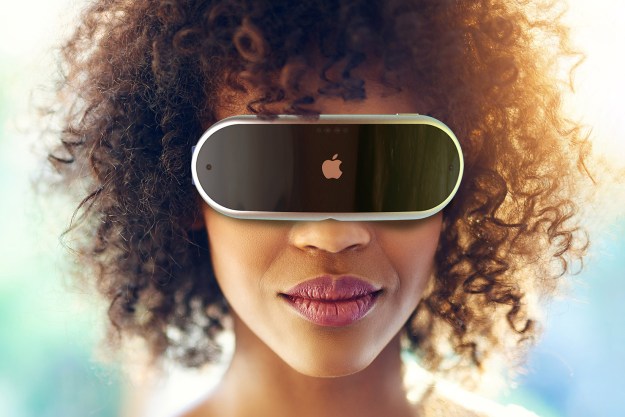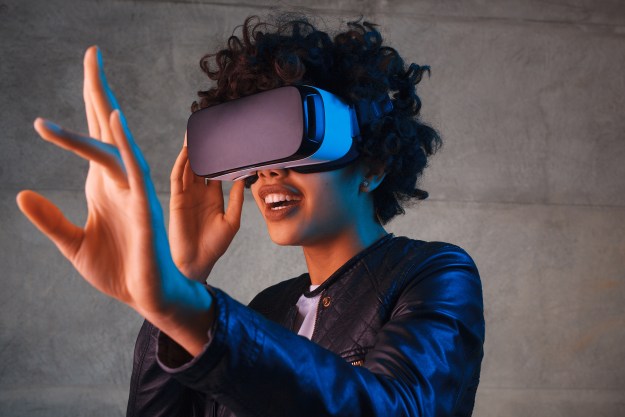
In a paper titled Illusory ownership of an invisible body reduces autonomic and subjective social anxiety responses, three neuroscientists share their approach to explore “how invisibility affects body perception and embodied cognition.” With the help of VR1280 virtual reality goggles, the researchers were able to carry out their first phase of the experiment by creating the illusion of invisibility when 125 participants looked down at where their bodies should have been.
To accentuate the feeling of invisibility, the researchers stroked the VR headset-wearing volunteers with a large paintbrush while simultaneously moving another paintbrush in the empty space the participants were looking at (via a separate pair of cameras pointing down at the floor and feeding this view to the VR headset). “Within less than a minute, the majority of the participants started to transfer the sensation of touch to the portion of empty space where they saw the paintbrush move and experienced an invisible body in that position,” said Arvid Guterstam, the lead of the study, in an interview with The Guardian.
The researchers took this a step further by stabbing a knife at the “invisible body” (that is, in the empty space underneath the cameras feeding the participants what they saw in their VR headsets). This led to “an elevated sweat skin response, and a higher heart rate, as if their brains were interpreting this threat in empty space as a threat to their own body,” Guterstam told The Washington Post.

In another phase of this experiment, the researchers tested the hypothesis that participants who felt invisible would feel less anxious when standing in front of an audience. “We based this prediction on the assumption that if the body is represented as an invisible entity, it will be represented as being invisible to outside observers as well, which, in turn, should reduce the brain’s social anxiety response to being the center of other people’s attention,” the paper stated.
The participants were shown a crowd of 11 stern-faced scientists in their VR headsets when they looked up. When they looked down, they either saw themselves as invisible (shown empty space when they looked down at where their bodies should have been) or saw a mannequin standing in their place. When perceiving themselves as invisible in front of the audience, participants experienced reduced physical stress (measured by heart rate) and perceived stress (verbalized using a scale).

These findings “revitalize the classic question raised by Plato almost two millennia ago regarding how the human mind would handle “the power” of invisibility from a social-moral perspective,” according to the paper. “This issue is becoming increasingly relevant today because of the emerging prospect of invisibility cloaking of an entire human body being made possible by modern materials science.”
Henrik Ehrsson, one of the authors of the study, said follow-up work would examine this very topic.
Editors' Recommendations
- We finally might know what Apple will call its AR/VR headset
- Apple’s VR headset could get these surprise iOS features
- What will Apple call its VR headset? We might have an answer
- Apple’s new AR headset may use Face ID technology to track hand gestures
- Pimax’s 12K QLED VR headset wants to take virtual reality to the next level


